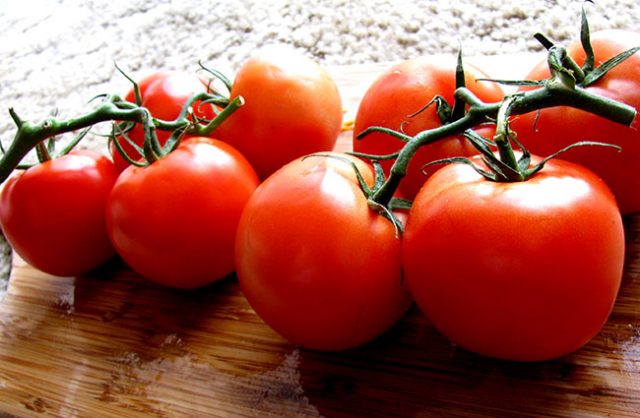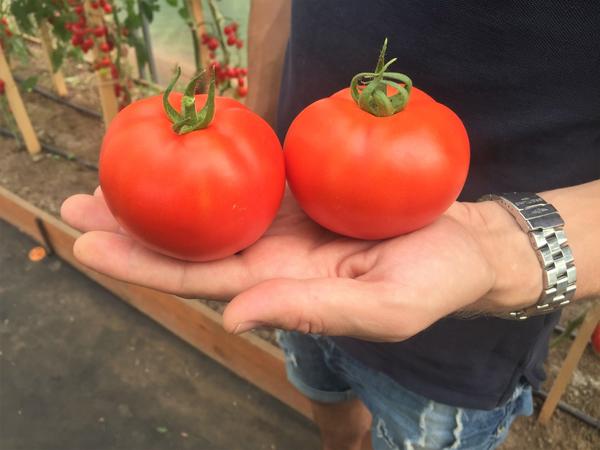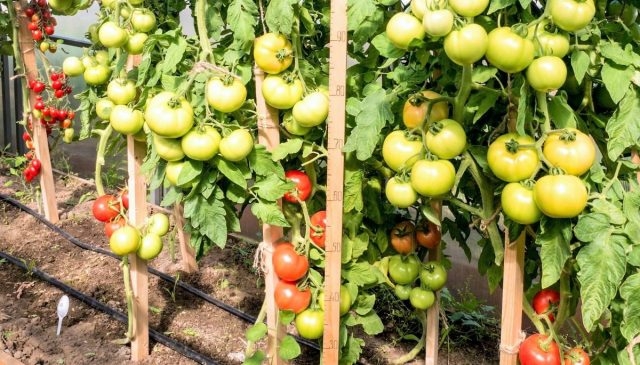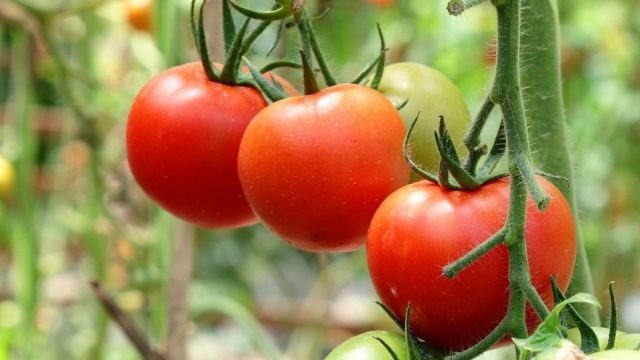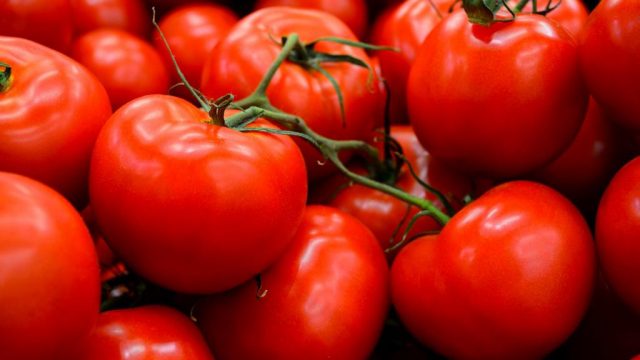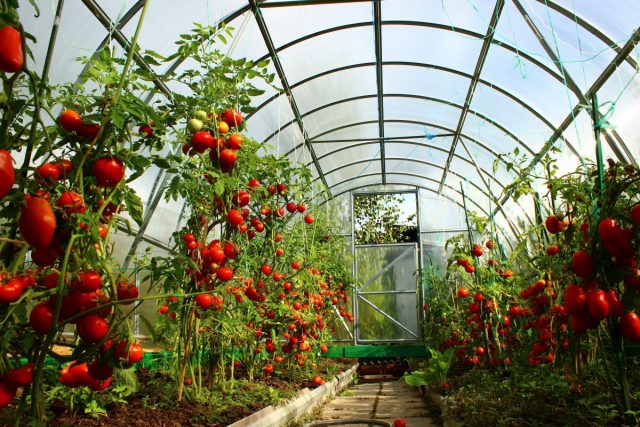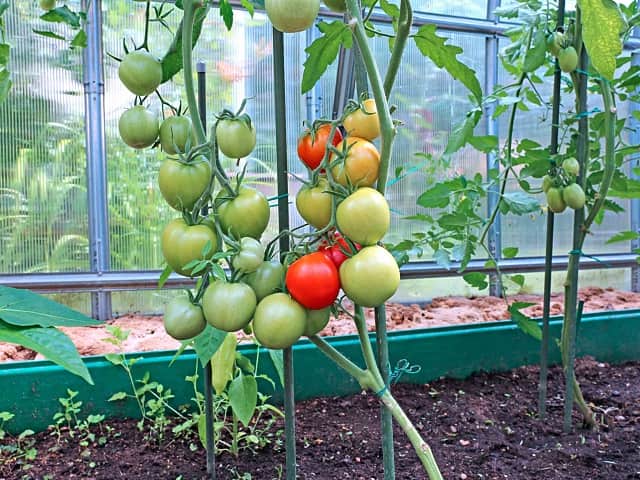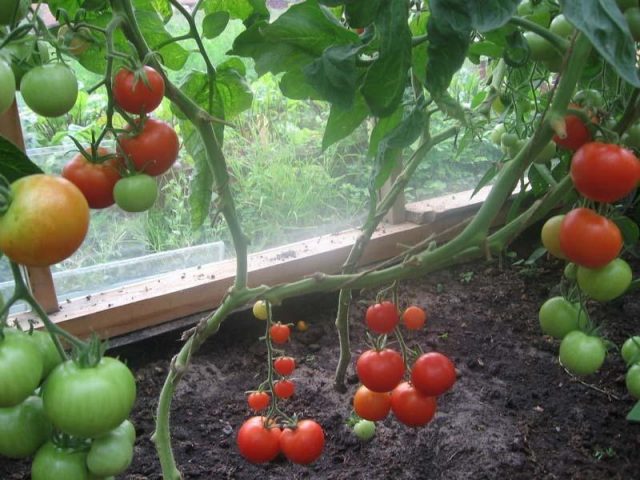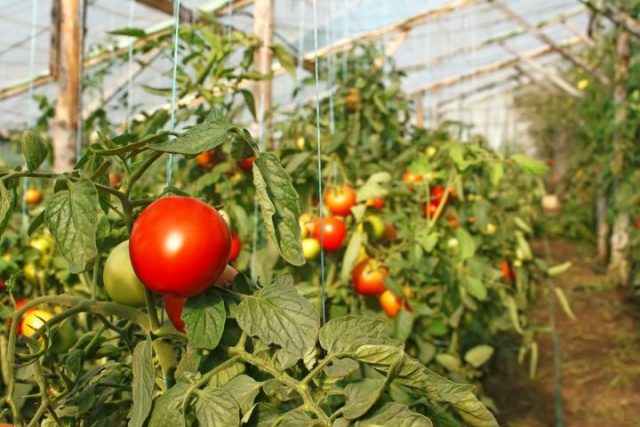Content
Lyrica tomato is one of the fastest ripening varieties. The tomato has other advantages, and it is very interesting how to study its characteristics in order to understand whether it is profitable to plant a variety in your summer cottage.
Description of tomato Lyrica
Lyrica is an early ripening and unpretentious tomato variety, bred agrofirm "Partner" from the Moscow region quite recently, only in 2017. When creating a hybrid, experts tried to get a high-yielding, tasty and undemanding variety for growing conditions - and they achieved their goal. The Lyrica tomato is equally well suited both for greenhouse conditions and for open ground, therefore it is extremely popular among gardeners.
In fact, the hybrid is a short plant, reaching a little over half a meter in height. The tomato bush is small and compact. Despite the low height, at the last stages of growth, its stems need a garter, since the weight of the fruits on their own cannot withstand.
Fruit inflorescences on the stems of Lyrica are formed above the 4th leaf from the ground and then go through the leaf. Each inflorescence consists of several flowers, which subsequently form fruits - up to 8. When growing tomatoes of this variety, you can allow the inflorescences to develop independently, or you can thin them out - to form larger and weighty fruits.
Description of fruits
The early-ripening tomato variety bears fruit within 78 days after planting the seeds - and at the same time, tomatoes ripen evenly and simultaneously. In appearance, ripe fruits are very beautiful - rounded, with small protrusions near the stalk, they have a bright red saturated color and a dense shiny skin. There is no green spot at the point of attachment of the tomato to the stem during the ripening period - the shade of the fruit remains uniform.
The pulp of tomatoes is juicy and without voids. The taste is slightly sour, but this does not spoil the tasting qualities of the variety, but only gives the Lyrica a pleasant uniqueness.
One tomato of this variety can weigh about 130 g. Fruits are stored well and for quite a long time, they are not prone to cracking and therefore do not rot for several weeks.
Characteristics of Lyrica tomato
To better understand the characteristics of a new tomato variety, it is necessary to study its main characteristics. How abundantly does Lyrica bear fruit, and what are the advantages and disadvantages of the variety?
Yield
In terms of fruiting and productivity, Lyrica can be considered one of the most profitable tomato varieties. From the moment of planting the seeds to the appearance of fruits, very little time passes - only 78 days. Bushes of this variety give a lot of tomatoes - up to 15 kg from one bush, up to 20 kg - from 1 sq. m.
Given the good preservation of the fruits and their high transportability, when growing the Lyrica variety, you can both provide yourself and your friends with tomatoes, and successfully send tomatoes for sale.
Scope of the fruit
Characteristics and description of tomato Lyrica classify the variety as universal. This means that you can use tomatoes completely freely - they can be eaten fresh in salads, added to snacks, and canned or cooked. However, it is not recommended to use tomatoes for juicing. Since Lyrica f1 tomatoes are very fleshy, the juice will turn out correspondingly - with pulp.
Disease and pest resistance
Among the main advantages of the Lyrica variety, one can note increased resistance to:
- the tobacco mosaic virus that infects the tops;
- late blight - a fungal disease that causes rot and shrinkage;
- Alternaria is another disease of fungal origin that affects the leaves, stem and fruits.
The listed ailments harm tomatoes especially often, therefore it is very valuable that the variety is not susceptible to them.
Tomatoes must be regularly inspected, and also treated with Bordeaux liquid, copper sulfate solution and home remedies - for example, based on laundry soap or garlic.
Advantages and disadvantages of the variety
Having familiarized yourself with the characteristics and features that Lyrica tomatoes possess, you can summarize their main advantages and disadvantages.
The advantages of the variety certainly include:
- High immunity to common diseases affecting tomatoes - it is easy to care for seedlings.
- Unpretentiousness to growing conditions - the variety is suitable not only for greenhouses, but also for open-air beds.
- Early ripening and yield - the full ripening cycle takes only 78 days, the variety bears fruit very abundantly.
- Beautiful, neat and juicy fruits with excellent taste - Lyrica has an unusual, but pleasant sourness.
- Versatility - Tomatoes are suitable for use in any form, fresh or processed.
- Sufficiently long shelf life - up to 2 weeks - and good transportability.
The description of Lyrica tomatoes is practically devoid of flaws. The only thing that can be attributed to the disadvantages of the tomato Lyrica is the modest size and low weight of the fruit. However, this feature is redeemed by abundant fruiting - small tomatoes in significant quantities completely cover the need for tasty fresh tomatoes.
Features of planting and caring for tomatoes Lyrica f1
Tomatoes of this variety can be planted both in a greenhouse and in an open garden. In both cases, the seeds are first planted - in warm and fertilized soil, in small boxes. This should be done around the end of March. Then the seedlings will have time to rise just in time for the full-fledged spring warming, when the soil warms up.
After the sprouts appear in the boxes, and the earth finally thaws, the seedlings will need to be thinned out - and then planted in moist, loosened soil. Tomatoes are planted in fertilized soil, in small holes - 5 sprouts per 1 sq. m. Immediately after planting, the tomatoes are watered abundantly, it is recommended to immediately carry out pest control in order to protect young shoots at an early stage of development.
The rules for caring for a Lyric tomato are quite simple and do not require special efforts from gardeners. It is enough to follow a few procedures.
- Watering of seedlings is carried out as needed - as the earth dries up. Tomatoes love moist soil, so it is recommended to apply moisture at least twice a week, 2 times a day. It is especially necessary to monitor the moisture content during the ripening period - at this time the plant needs an increased amount of water.
- As the tomato bush grows, the shoots are examined and, if necessary, cut off the excess ones. It is better to leave no more than 2 - 4 stems in one bush - otherwise the roots will simply interfere with each other, the development of the plant will slow down, which will affect the yield.
- Seedlings in the open field and in the greenhouse are regularly weeded from weeds, which not only take useful substances from tomatoes, but also contribute to the development of diseases.
- Another necessary procedure is stalk pinching. The bottom line is that all extra shoots that are not involved in fruiting are removed from the plant. "Stepson" without control can grow strongly, and then this will affect the yield, since the main plant will receive less moisture and nutrients.
- The grown shoots are strengthened and tied to a support.On one bush of Lyrica tomato, up to 20 kg of tomatoes can form - sometimes the stems do not withstand the load and simply break.
If the soil in which the tomatoes grow is not nutritious enough, the seedlings can be fed with potash or nitrogen fertilizers. Sometimes it is advisable to apply mulching - for example, if spring frosts are still expected, and tomatoes are growing in the open air. A dense layer of mulch will protect the seedlings from freezing and help retain moisture and nutrients.
However, the variety bears fruit very well in the open air - the yield can be only 1 - 2 kg less. Therefore, the choice of a landing site depends only on personal preferences and capabilities.
Conclusion
Tomato Lyrica is one of the best unpretentious varieties for the middle lane. Seedling maintenance is minimal, and the fruits can be obtained very plentiful, of high quality and suitable for any use.
Testimonials
